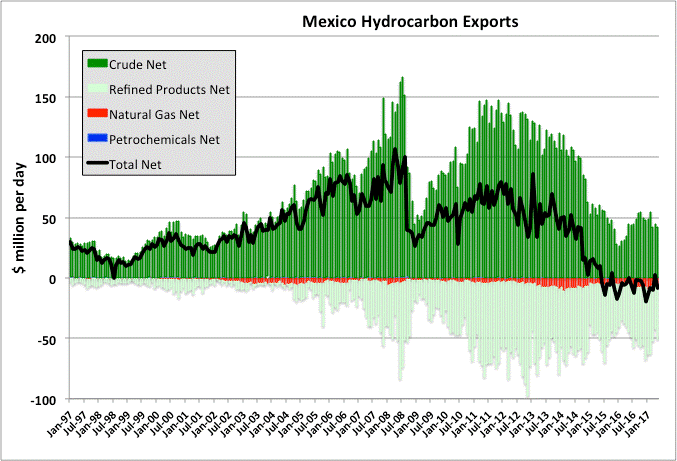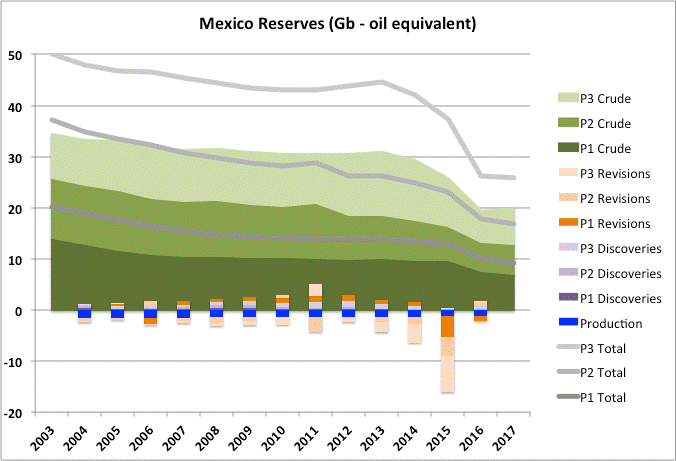In dollar terms, since mid 2015 Mexico has been a net importer of hydrocarbons (oil, natural gas, petroleum products and petrochemicals combined). To date it has been a relatively small and fairly constant amount, but with their oil production declining, and oil prices apparently continuing to fall while natural gas prices may be on the rise, the net cost could now start to increase.

2017 reserve numbers were issued in early June. These used to come from PEMEX, but now look like they come from the government through the National Hydrocarbon Commission (probably as a result of the initiative for oil industry deregulation). Overall all categories of reserves have been falling for some years. The chart below shows oil and total (i.e. including condensate, NGL and natural gas) for proved, probable and possible. The production, discoveries and revisions for total petroleum (no figures for crude alone) are also shown – a bit fiddly but the trends can be seen – falling production, small and declining discoveries and some big recent revisions.
Note that the usual confusion holds here in that reserves are for crude only (condensate is included in the total numbers), but total flow rates (discussed further below) have crude and condensate numbers included (but clearly specified). To add to the confusion the datasets below are labeled P1, P2 and P3, but because the charts are stacked they should be read on the axis as 1P, 2P and 3Ps (the bar chart increments don’t really work out very well like this because the revisions can be positive or negative).

Mexico has four oil producing regions, Northeast Marine, which includes KMZ and Cantarell – the biggest fields, Southwest Marines, Northern Region onshore and Southern Region Onshore. The changes from 2016 to 2017 for these are shown below.
…click on the above link to read the rest of the article…





